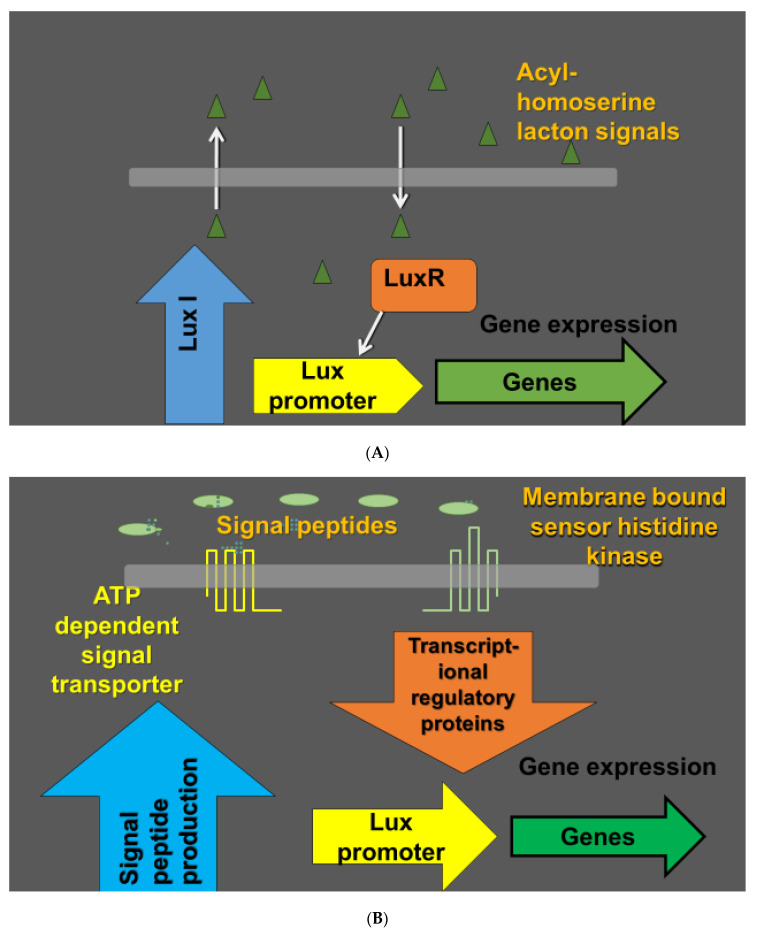Figure 1.
Quorum sensing in bacteria as a cell to cell signaling mechanism. Populations of bacteria can operate in a coordinated manner depending on environmental conditions and the density of the bacterial population. The coordination of the bacterial population performance is based on secretion of signaling molecules called autoinducers. Bacterial cells detect the autoinducers and coordinate the regulation of expression of particular genes in dependence of the autoinducer concentrations. In Gram negative bacteria, the autoinducers are typically acyl-homoserine lactones (acyl-HSL). Lux I family enzymes (Lux I-type acyl-HSL synthases) catalyze the formation of species-specific homoserine lactones. Acyl-HSL are detected by lux R type transcription regulators (A). Gram positive bacteria use 8–10 amino acid long short oligopeptides and membrane bound sensor histidine kinases as receptors. As the membrane is not permeable to the peptides, specialized transporters mediate secretion of the quorum sensing peptides. The oligopeptide signaling is mediated by DNA binding transcription regulatory proteins (B) [62].

